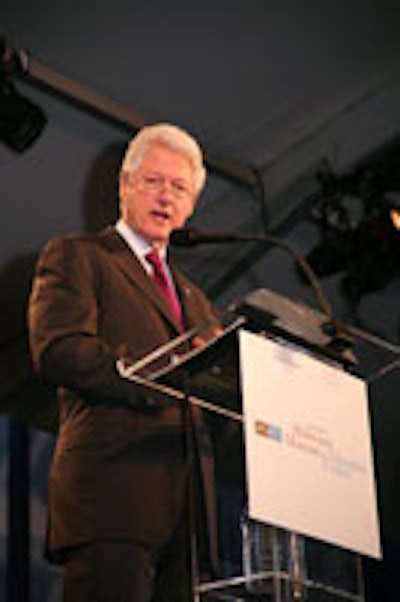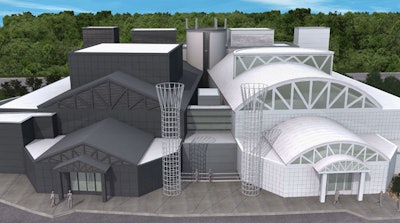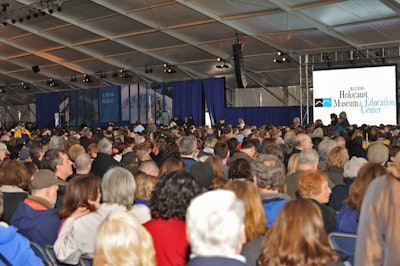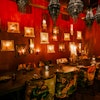It took 10 years of planning and rigorous fund-raising to build Skokie's Illinois Holocaust Museum & Education Center, and on Sunday the $45 million 65,000-square-foot structure officially opened to the public. To mark the occasion, President Bill Clinton flew in to deliver the keynote address; author Elie Wiesel served as guest lecturer; and Barack Obama, Hillary Clinton, and Israeli president Shimon Peres taped short tribute videos that were aired on site. Some 12,000 guests attended the affair, which—apart from the speaking program—involved performances and museum tours.
So, what kind of details went into planning the huge event? According to Rick Jasculca, chairman and C.E.O. of public affairs and event management firm Jasculca/Terman and Associates Inc., which the museum's executive director, Rick Hirschhaut, tapped to handle logistics, there were quite a few. In addition to handling the PR, printing programs and invitations, producing videos and a Web site, ticketing, credentialing, and seating, the team needed to construct two mega tents for the afternoon's speaking program and arrange for shuttle transportation.
The reason for the shuttle system? With 12,000 guests expected, planners anticipated that the crowd would need approximately 6,000 parking spots. On Sunday, the museum's lot was overtaken with construction materials that went into building the two tents; but even if the lot were free, "nobody has parking for 6,000 cars," Jasculca said. "So we had to move all parking off site." Ultimately, the team arranged for most guests to park at Skokie's Old Orchard Mall and directed overflow traffic to eight other nearby lots. They then arranged for separate shuttles to bring "the masses, the media, and the program participants" to the museum, Jasculca said.
Though most everything went smoothly in terms of transportation, a few last-minute challenges popped up on Sunday. One stemmed from Bill Clinton's enthusiasm for the whole ordeal. "Originally, President Clinton was going to come in, get to the museum, do the speech, and then leave immediately," said Jasculca. "But we learned on Sunday, as he was flying in, that he wanted to tour the museum ahead of his speech." Though all the museum's staffers had planned to be in the tent throughout the opening ceremony, "we had to find somebody who was capable of touring President Clinton through the space and pull that person from the site," Jasculca said. The museum's director of marketing and development, Barbara Berger, ultimately handled the task.
At the end of the afternoon, Jasculca and his crew focused on clearing the museum of its thousands of guests. "People arrived over a four-hour period, but they all had to leave at one time," he said. "So there was sort of a run for the roses there. But the last I heard, everyone got out in one piece. We cleared the site in an hour and 45-minute period, which is pretty good, given the nine parking lots we had to deal with."
Pulling it all together took a year of weekly countdown meetings with Rick Jasculca, event manager Andrew Jasculca, project manager Carly Olsman, press liason Michelle Valmond, stage manager Lauren Foley, and Hirschhaut. In the final weeks leading up to the event, the team also met with local police and fire departments and the Secret Service. The key to keeping everything organized, Jascucla said, was "making sure that everyone was talking in a programmmed and disciplined way, so that we didn't allow anything to fall through the cracks."









![Si201911281908[81]](https://img.bizbash.com/files/base/bizbash/bzb/image/2024/10/SI201911281908_81_.67180220c35e2.png?auto=format%2Ccompress&fit=crop&h=167&q=70&w=250)














